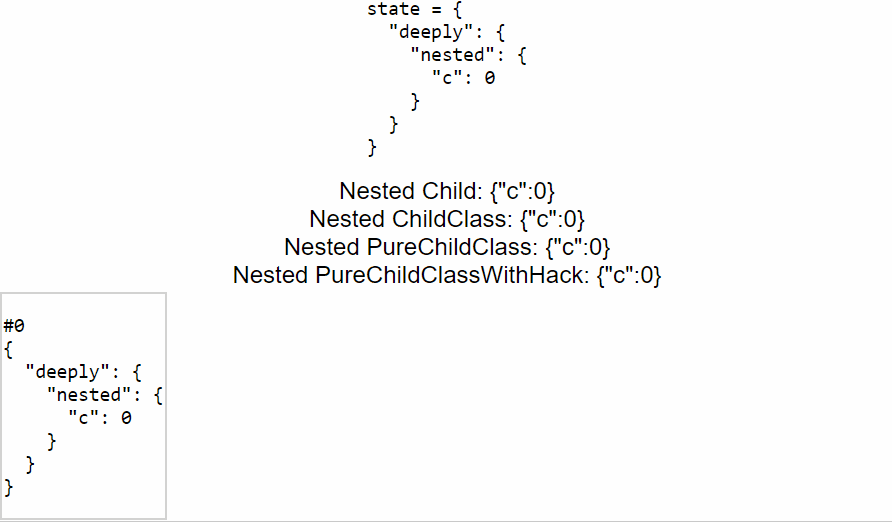Disclaimer
Nested State in React is wrong design
Read this excellent answer.
Reasoning behind this answer:
React's setState is just a built-in convenience, but you soon realise
that it has its limits. Using custom properties and intelligent use of
forceUpdate gives you much more.
eg:
class MyClass extends React.Component {
myState = someObject
inputValue = 42
...
MobX, for example, ditches state completely and uses custom observable properties.
Use Observables instead of state in React components.
There is another shorter way to update whatever nested property.
this.setState(state => {
state.nested.flag = false
state.another.deep.prop = true
return state
})
On one line
this.setState(state => (state.nested.flag = false, state))
note: This here is Comma operator ~MDN, see it in action here (Sandbox).
It is similar to (though this doesn't change state reference)
this.state.nested.flag = false
this.forceUpdate()
For the subtle difference in this context between forceUpdate and setState see the linked example and sandbox.
Of course this is abusing some core principles, as the state should be read-only, but since you are immediately discarding the old state and replacing it with new state, it is completely ok.
Warning
Even though the component containing the state will update and rerender properly (except this gotcha), the props will fail to propagate to children (see Spymaster's comment below). Only use this technique if you know what you are doing.
For example, you may pass a changed flat prop that is updated and passed easily.
render(
//some complex render with your nested state
<ChildComponent complexNestedProp={this.state.nested} pleaseRerender={Math.random()}/>
)
Now even though reference for complexNestedProp did not change (shouldComponentUpdate)
this.props.complexNestedProp === nextProps.complexNestedProp
the component will rerender whenever parent component updates, which is the case after calling this.setState or this.forceUpdate in the parent.
Effects of mutating the state sandbox
Using nested state and mutating the state directly is dangerous because different objects might hold (intentionally or not) different (older) references to the state and might not necessarily know when to update (for example when using PureComponent or if shouldComponentUpdate is implemented to return false) OR are intended to display old data like in the example below.
Imagine a timeline that is supposed to render historic data, mutating the data under the hand will result in unexpected behaviour as it will also change previous items.
![state-flow]()
![state-flow-nested]()
Anyway here you can see that Nested PureChildClass is not rerendered due to props failing to propagate.


